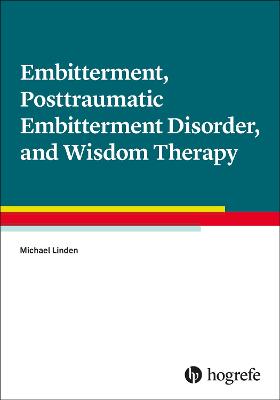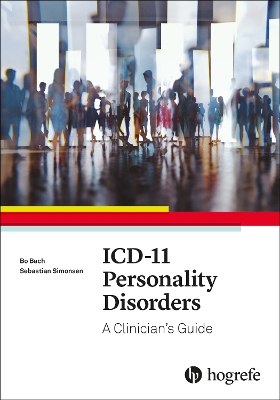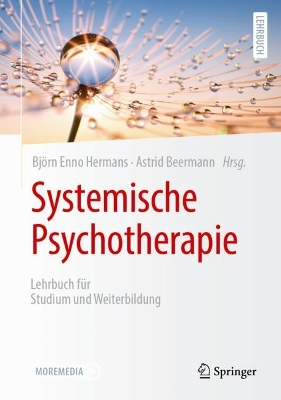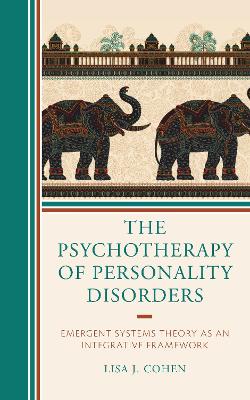Embitterment, Posttraumatic Embitterment Disorder, and Wisdom Therapy
 portes grátis
portes grátis
Embitterment, Posttraumatic Embitterment Disorder, and Wisdom Therapy
Linden, Michael
Hogrefe Publishing
06/2022
106
Mole
Inglês
9780889376120
15 a 20 dias
Descrição não disponível.
1 The Emotion Embitterment
1.1 Emotional Reaction to Humiliation, Vilification, and Injustice
1.2 Theory of Emotion
1.3 Function of Embitterment
1.4 Violation of Basic Beliefs
1.5 Psychology of Belief in a Just World
1.6 Injustice and Embitterment in a Societal Context
2 Resilience and Protective Factors Against Negative Life Events
2.1 Wisdom
2.2 Forgiveness
2.3 Intelligence and Problem-Solving Skills
2.4 Emotional Intelligence
2.5 Sense of Coherence
2.6 Morality
3 Posttraumatic Embitterment Disorder
3.1 Clinical Picture
3.2 Definition and Diagnostic Criteria of PTED
3.3 Differential Diagnosis of PTED
3.3.1 Differentiation of Intrusions, Rumination, and Associated
Symptoms
3.3.2 Differentiation Among PTED and Other Mental Disorders
3.3.3 Differentiation Among PTED and Other Forms of Bitterness
3.4 Embitterment and Aggression
3.5 Epidemiology and Course of Embitterment and PTED
3.5.1 Frequency
3.5.2 Course
4 Diagnosis of Embitterment Disorder
4.1 Self-Rating and Screening Instruments
4.2 Standardized Diagnostic Interview for PTED
5 Treatment of PTED
5.1 General Therapy Problems
5.2 Building a Therapeutic Relationship
5.3 Examination of the Critical Life Event
5.4 Examination of Intrusions, Emotions, Fantasies of Revenge, and
Changes in Everyday Life
5.5 Agreement on Treatment Goals and Motivation to Change
5.6 Wisdom Therapy
5.6.1 The General Structure of Wisdom Therapy
5.6.2 The Method of Insolvable Problems
5.6.3 Identification With a Fictional Victim
5.6.4 Perception and Acceptance of Emotions
5.6.5 Change of Perspective
5.6.6 Empathy and Compassion
5.6.7 Contextualism
5.6.8 Value Relativism
5.6.9 Self-Relativization
5.6.10 Self-Distancing
5.6.11 Emotional Serenity and Humor
5.6.12 Relativization of Aspirations
5.6.13 Long-Term Perspective
5.6.14 Uncertainty Tolerance
5.6.15 Knowledge of Facts and Procedures
5.6.16 Goal Clarification and Model Problem Solvers
5.6.17 Aphorisms Expressing Wisdom
5.7 Exposure
5.8 Salutotherapy and Promoting Activity and New Perspectives
5.9 Endangerment of Self and Others
5.10 Treatment Efficacy
6 Socio-Medical and Juridical Aspects
6.1 Incapacity to Work
6.2 Forensic Aspects
6.3 Criminal Liability
7 Conclusion and Outlook
8 References
9 Appendix: Tools and Resources
1.1 Emotional Reaction to Humiliation, Vilification, and Injustice
1.2 Theory of Emotion
1.3 Function of Embitterment
1.4 Violation of Basic Beliefs
1.5 Psychology of Belief in a Just World
1.6 Injustice and Embitterment in a Societal Context
2 Resilience and Protective Factors Against Negative Life Events
2.1 Wisdom
2.2 Forgiveness
2.3 Intelligence and Problem-Solving Skills
2.4 Emotional Intelligence
2.5 Sense of Coherence
2.6 Morality
3 Posttraumatic Embitterment Disorder
3.1 Clinical Picture
3.2 Definition and Diagnostic Criteria of PTED
3.3 Differential Diagnosis of PTED
3.3.1 Differentiation of Intrusions, Rumination, and Associated
Symptoms
3.3.2 Differentiation Among PTED and Other Mental Disorders
3.3.3 Differentiation Among PTED and Other Forms of Bitterness
3.4 Embitterment and Aggression
3.5 Epidemiology and Course of Embitterment and PTED
3.5.1 Frequency
3.5.2 Course
4 Diagnosis of Embitterment Disorder
4.1 Self-Rating and Screening Instruments
4.2 Standardized Diagnostic Interview for PTED
5 Treatment of PTED
5.1 General Therapy Problems
5.2 Building a Therapeutic Relationship
5.3 Examination of the Critical Life Event
5.4 Examination of Intrusions, Emotions, Fantasies of Revenge, and
Changes in Everyday Life
5.5 Agreement on Treatment Goals and Motivation to Change
5.6 Wisdom Therapy
5.6.1 The General Structure of Wisdom Therapy
5.6.2 The Method of Insolvable Problems
5.6.3 Identification With a Fictional Victim
5.6.4 Perception and Acceptance of Emotions
5.6.5 Change of Perspective
5.6.6 Empathy and Compassion
5.6.7 Contextualism
5.6.8 Value Relativism
5.6.9 Self-Relativization
5.6.10 Self-Distancing
5.6.11 Emotional Serenity and Humor
5.6.12 Relativization of Aspirations
5.6.13 Long-Term Perspective
5.6.14 Uncertainty Tolerance
5.6.15 Knowledge of Facts and Procedures
5.6.16 Goal Clarification and Model Problem Solvers
5.6.17 Aphorisms Expressing Wisdom
5.7 Exposure
5.8 Salutotherapy and Promoting Activity and New Perspectives
5.9 Endangerment of Self and Others
5.10 Treatment Efficacy
6 Socio-Medical and Juridical Aspects
6.1 Incapacity to Work
6.2 Forensic Aspects
6.3 Criminal Liability
7 Conclusion and Outlook
8 References
9 Appendix: Tools and Resources
Este título pertence ao(s) assunto(s) indicados(s). Para ver outros títulos clique no assunto desejado.
1 The Emotion Embitterment
1.1 Emotional Reaction to Humiliation, Vilification, and Injustice
1.2 Theory of Emotion
1.3 Function of Embitterment
1.4 Violation of Basic Beliefs
1.5 Psychology of Belief in a Just World
1.6 Injustice and Embitterment in a Societal Context
2 Resilience and Protective Factors Against Negative Life Events
2.1 Wisdom
2.2 Forgiveness
2.3 Intelligence and Problem-Solving Skills
2.4 Emotional Intelligence
2.5 Sense of Coherence
2.6 Morality
3 Posttraumatic Embitterment Disorder
3.1 Clinical Picture
3.2 Definition and Diagnostic Criteria of PTED
3.3 Differential Diagnosis of PTED
3.3.1 Differentiation of Intrusions, Rumination, and Associated
Symptoms
3.3.2 Differentiation Among PTED and Other Mental Disorders
3.3.3 Differentiation Among PTED and Other Forms of Bitterness
3.4 Embitterment and Aggression
3.5 Epidemiology and Course of Embitterment and PTED
3.5.1 Frequency
3.5.2 Course
4 Diagnosis of Embitterment Disorder
4.1 Self-Rating and Screening Instruments
4.2 Standardized Diagnostic Interview for PTED
5 Treatment of PTED
5.1 General Therapy Problems
5.2 Building a Therapeutic Relationship
5.3 Examination of the Critical Life Event
5.4 Examination of Intrusions, Emotions, Fantasies of Revenge, and
Changes in Everyday Life
5.5 Agreement on Treatment Goals and Motivation to Change
5.6 Wisdom Therapy
5.6.1 The General Structure of Wisdom Therapy
5.6.2 The Method of Insolvable Problems
5.6.3 Identification With a Fictional Victim
5.6.4 Perception and Acceptance of Emotions
5.6.5 Change of Perspective
5.6.6 Empathy and Compassion
5.6.7 Contextualism
5.6.8 Value Relativism
5.6.9 Self-Relativization
5.6.10 Self-Distancing
5.6.11 Emotional Serenity and Humor
5.6.12 Relativization of Aspirations
5.6.13 Long-Term Perspective
5.6.14 Uncertainty Tolerance
5.6.15 Knowledge of Facts and Procedures
5.6.16 Goal Clarification and Model Problem Solvers
5.6.17 Aphorisms Expressing Wisdom
5.7 Exposure
5.8 Salutotherapy and Promoting Activity and New Perspectives
5.9 Endangerment of Self and Others
5.10 Treatment Efficacy
6 Socio-Medical and Juridical Aspects
6.1 Incapacity to Work
6.2 Forensic Aspects
6.3 Criminal Liability
7 Conclusion and Outlook
8 References
9 Appendix: Tools and Resources
1.1 Emotional Reaction to Humiliation, Vilification, and Injustice
1.2 Theory of Emotion
1.3 Function of Embitterment
1.4 Violation of Basic Beliefs
1.5 Psychology of Belief in a Just World
1.6 Injustice and Embitterment in a Societal Context
2 Resilience and Protective Factors Against Negative Life Events
2.1 Wisdom
2.2 Forgiveness
2.3 Intelligence and Problem-Solving Skills
2.4 Emotional Intelligence
2.5 Sense of Coherence
2.6 Morality
3 Posttraumatic Embitterment Disorder
3.1 Clinical Picture
3.2 Definition and Diagnostic Criteria of PTED
3.3 Differential Diagnosis of PTED
3.3.1 Differentiation of Intrusions, Rumination, and Associated
Symptoms
3.3.2 Differentiation Among PTED and Other Mental Disorders
3.3.3 Differentiation Among PTED and Other Forms of Bitterness
3.4 Embitterment and Aggression
3.5 Epidemiology and Course of Embitterment and PTED
3.5.1 Frequency
3.5.2 Course
4 Diagnosis of Embitterment Disorder
4.1 Self-Rating and Screening Instruments
4.2 Standardized Diagnostic Interview for PTED
5 Treatment of PTED
5.1 General Therapy Problems
5.2 Building a Therapeutic Relationship
5.3 Examination of the Critical Life Event
5.4 Examination of Intrusions, Emotions, Fantasies of Revenge, and
Changes in Everyday Life
5.5 Agreement on Treatment Goals and Motivation to Change
5.6 Wisdom Therapy
5.6.1 The General Structure of Wisdom Therapy
5.6.2 The Method of Insolvable Problems
5.6.3 Identification With a Fictional Victim
5.6.4 Perception and Acceptance of Emotions
5.6.5 Change of Perspective
5.6.6 Empathy and Compassion
5.6.7 Contextualism
5.6.8 Value Relativism
5.6.9 Self-Relativization
5.6.10 Self-Distancing
5.6.11 Emotional Serenity and Humor
5.6.12 Relativization of Aspirations
5.6.13 Long-Term Perspective
5.6.14 Uncertainty Tolerance
5.6.15 Knowledge of Facts and Procedures
5.6.16 Goal Clarification and Model Problem Solvers
5.6.17 Aphorisms Expressing Wisdom
5.7 Exposure
5.8 Salutotherapy and Promoting Activity and New Perspectives
5.9 Endangerment of Self and Others
5.10 Treatment Efficacy
6 Socio-Medical and Juridical Aspects
6.1 Incapacity to Work
6.2 Forensic Aspects
6.3 Criminal Liability
7 Conclusion and Outlook
8 References
9 Appendix: Tools and Resources
Este título pertence ao(s) assunto(s) indicados(s). Para ver outros títulos clique no assunto desejado.







